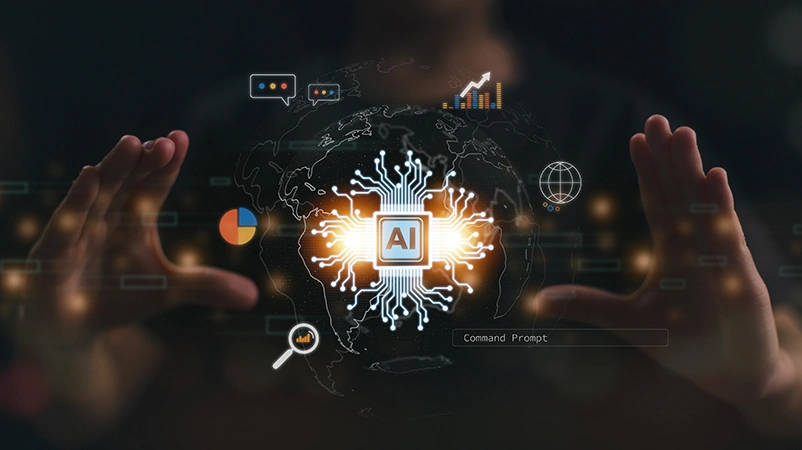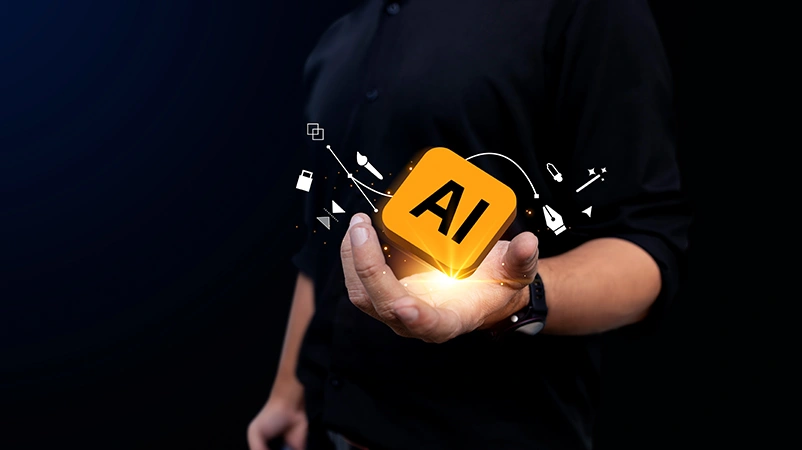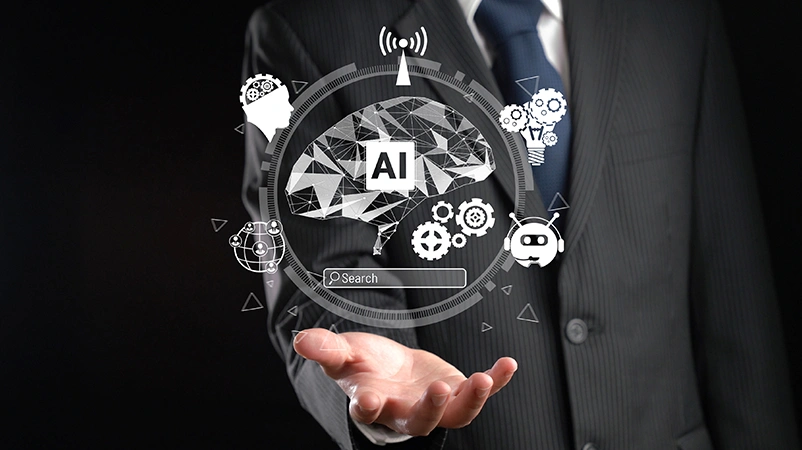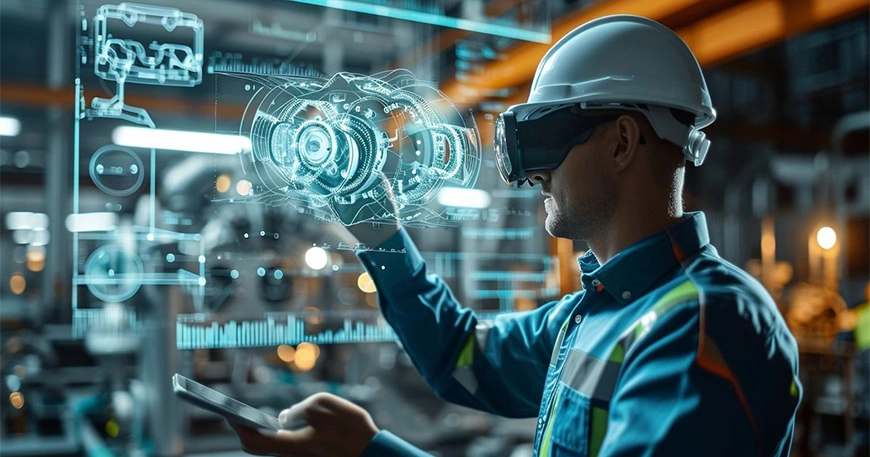In the last few years, Artificial Intelligence (AI) has evolved from a futuristic concept to a practical business tool. But among all its branches, Generative AI has emerged as the most disruptive and transformative force. From creating realistic images and videos to writing content, designing products, and even generating code — Generative AI is redefining how industries operate and innovate.
Generative AI models, such as ChatGPT, Gemini, and DALL·E, have proven that machines can not only analyze data but also create new ideas, solutions, and experiences. As we move into 2025, organizations across every sector are embracing generative technologies to boost creativity, accelerate workflows, and unlock entirely new opportunities.
What is Generative AI?
Generative AI refers to a category of artificial intelligence that can generate new data, designs, or content similar to what it has been trained on. Unlike traditional AI models that classify or predict, generative systems create — producing text, images, code, videos, and even 3D designs from simple inputs or prompts.
It works using advanced neural networks such as:
- GANs (Generative Adversarial Networks) – used for realistic image and video generation.
- Transformers – models like GPT or BERT that understand and generate human-like text.
- Diffusion Models – powering tools that create detailed, photorealistic visuals.
This combination of deep learning, massive datasets, and computing power has unlocked the ability to generate high-quality, context-aware outputs at scale.

How Generative AI is Transforming Industries
1. Healthcare: Accelerating Research and Diagnosis
Generative AI is playing a revolutionary role in drug discovery, medical imaging, and personalized medicine.
AI models can simulate molecular interactions and design potential compounds faster than traditional lab processes, saving years of research time. In radiology, AI-generated images help detect anomalies earlier and more accurately.
For example, pharmaceutical companies are using generative algorithms to predict how new drugs might interact with the human body — significantly reducing testing costs and risks.
2. Manufacturing: From Design to Optimization
Manufacturers are using Generative AI for product design, predictive maintenance, and supply chain optimization.
By analyzing constraints like materials, costs, and durability, generative design tools can automatically create optimized blueprints that humans might never imagine.
AI systems can also simulate production environments, identify inefficiencies, and suggest improvements — leading to smarter factories and sustainable operations.
3. Retail and E-commerce: Hyper-Personalized Experiences
In the retail sector, Generative AI is helping brands create personalized marketing campaigns, virtual try-ons, and dynamic product recommendations.
AI models analyze purchase history, browsing behavior, and customer preferences to create custom visuals, targeted ads, and real-time product suggestions — improving engagement and conversion rates.
Brands like Nike and Sephora are already leveraging AI-driven personalization to enhance customer satisfaction and brand loyalty.
4. Finance: Smarter Decisions and Risk Modeling
In banking and finance, generative AI is improving fraud detection, financial forecasting, and customer communication.
AI-powered chatbots are providing natural, human-like customer support. At the same time, predictive models analyze transaction data to detect unusual patterns before they lead to fraud.
Generative models can also simulate market conditions and help analysts visualize different risk scenarios, enabling smarter investment strategies.
5. Media and Entertainment: Redefining Creativity
Generative AI has completely changed how digital content is produced.
Writers use AI tools to draft stories or scripts; musicians experiment with AI-composed melodies; and video editors rely on AI for visual effects and animation.
This technology allows creators to focus on ideas and storytelling while AI takes care of repetitive or technical tasks.
From Hollywood studios to independent creators, Generative AI is expanding creative boundaries like never before.
6. Education: Personalized Learning and Skill Building
Education is becoming more dynamic with the help of AI.
Generative AI tools can create customized lesson plans, practice exercises, and quizzes based on a student’s performance and learning style.
It also enables educators to generate multilingual content and visual aids instantly, making learning more accessible across geographies and skill levels.
7. IT & Software Development: Coding at the Speed of Thought
Developers are using Generative AI models like GitHub Copilot and ChatGPT Code Interpreter to write and optimize code faster.
AI-assisted coding not only reduces development time but also helps in debugging, testing, and documentation.
This allows IT teams to focus on strategic innovation instead of repetitive programming tasks.

Benefits of Generative AI Across Businesses
- Enhanced Productivity – Automating creative and technical processes saves time and resources.
- Faster Innovation – AI accelerates design, testing, and idea generation.
- Personalized User Experience – Tailored outputs drive engagement and customer loyalty.
- Cost Optimization – Reduces manual labor and development costs across industries.
- Scalable Creativity – Enables teams to produce more content, designs, and solutions at scale.
Challenges and Ethical Considerations
Despite its potential, Generative AI brings challenges related to data privacy, authenticity, and misuse.
Deepfakes, plagiarism, and misinformation are major concerns that require strict ethical frameworks and AI governance.
Organizations must ensure transparency, data compliance, and responsible AI practices while deploying generative systems.
Building AI responsibly means aligning innovation with human values, protecting intellectual property, and ensuring that automation enhances — not replaces — human creativity.

The Future of Generative AI
As generative models continue to evolve, we’ll see greater integration across sectors.
Future advancements will make AI:
- Multimodal, combining text, image, audio, and video generation.
- Context-aware, understanding deeper nuances and emotional tones.
- Collaborative, working alongside humans as creative partners rather than tools.
Generative AI will play a key role in digital transformation, sustainability, and global innovation, reshaping industries from the inside out.
Conclusion
Businesses that embrace Generative AI not only gain a competitive advantage but also redefine the boundaries of what’s possible. The future belongs to those who innovate intelligently — blending human imagination with machine capability to shape a smarter, more connected world.



